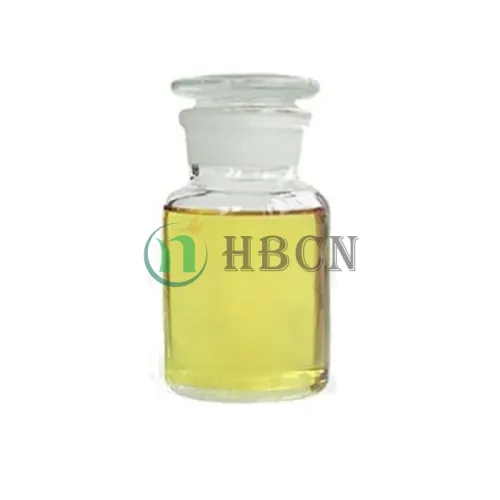
Des . 14, 2024 01:54 Back to list
Chlorothalonil 75 WP Safety Data Sheet and Handling Guidelines
Chlorothalonil 75 WP Understanding the MSDS and Safe Use Guidelines
Chlorothalonil 75 WP (Wettable Powder) is a widely used fungicide that plays a crucial role in agriculture for the control of various fungal diseases affecting crops. Its effectiveness against a broad spectrum of pathogens makes it a popular choice among farmers. However, like many pesticides, it is essential to understand its properties, safe handling practices, and environmental implications. This article delves into the Material Safety Data Sheet (MSDS) of Chlorothalonil 75 WP, emphasizing safety and best practices for its use.
Chemical Overview
Chlorothalonil, a member of the chloronitrile group, is commonly employed to combat diseases such as leaf spots, blights, and wilts in a range of crops, including vegetables, fruits, and ornamentals. It functions by inhibiting fungal spore germination and mycelial growth, making it an effective preventative measure rather than a curative treatment. The formulation of 75 WP indicates that it contains 75% active ingredient, which necessitates careful diluting and application as per the guidelines provided in its MSDS.
Physical and Chemical Properties
According to the MSDS, Chlorothalonil 75 WP is described as a pale yellow to green powder with a characteristic odor. It has a low solubility in water, necessitating the use of surfactants or emulsifiers for effective mixing. The powder form allows for versatile application methods, including foliar sprays and soil treatments. However, users should note that due to its hydrophobic nature, the formulation can pose challenges with drift and runoff, particularly during heavy rain or irrigation.
Safety Precautions
The MSDS provides critical information on the safe handling of Chlorothalonil 75 WP. Protective measures are paramount to prevent exposure. It is recommended that users wear suitable gloves, goggles, and masks during mixing and application. In addition, the product should be handled in well-ventilated areas to minimize inhalation risks.
In case of skin or eye contact, the MSDS advises rinsing the affected areas with copious amounts of water and seeking medical attention if irritation persists. For ingestion or inhalation, emergency medical services should be contacted immediately. Having a comprehensive first aid kit on hand and ensuring all workers are trained in emergency procedures is crucial to workplace safety.
odm msds chlorothalonil 75 wp

Environmental Considerations
Chlorothalonil has raised concerns regarding its environmental impact, particularly on aquatic ecosystems. The MSDS highlights its toxic effects on non-target organisms, including fish and aquatic invertebrates. As such, it is critical to adhere to application guidelines that limit usage near water bodies. Proper disposal of excess product and containers is also essential to prevent contamination of soil and water sources.
Using integrated pest management (IPM) strategies can help mitigate the risks associated with pesticide use. These may include choosing resistant crop varieties, rotating chemicals with different modes of action, and employing biological controls.
Regulatory Compliance
Farmers and applicators are urged to consult local regulations regarding the use of Chlorothalonil 75 WP, as different regions may have specific restrictions in place. Ensuring compliance with these regulations helps protect both human health and the environment, thereby facilitating sustainable agricultural practices.
Conclusion
Chlorothalonil 75 WP remains a vital tool in the arsenal against crop diseases, but its effective and safe use hinges on understanding its MSDS and adhering to established safety protocols. By employing responsible practices, including personal protective equipment, proper application techniques, and environmental considerations, agricultural professionals can maximize the benefits of this fungicide while minimizing risks. As we advance towards more sustainable farming practices, the stewardship of chemical products like Chlorothalonil will be essential to ensure that agriculture can sustainably meet the demands of an ever-growing global population.
In summary, education and awareness are key components of pesticide management, enabling safe and effective use of Chlorothalonil 75 WP while protecting workers, consumers, and the environment.
-
Famoxadone Fungicide: Prevent & Cure Plant Diseases Effectively
NewsAug.26,2025
-
Topramezone Herbicide: Selective & Powerful Weed Control for Corn
NewsAug.24,2025
-
Powerful Fungicide for Optimal Crop Health & Yield Protection
NewsAug.23,2025
-
Azoxystrobin Fungicide: Advanced Crop Protection Solutions
NewsAug.22,2025
-
Willowood Imidacloprid: Best Broad-Spectrum Insecticide Solution
NewsAug.22,2025
-
Atrazine Herbicide: Selective & Effective Weed Control for Sale
NewsAug.21,2025
